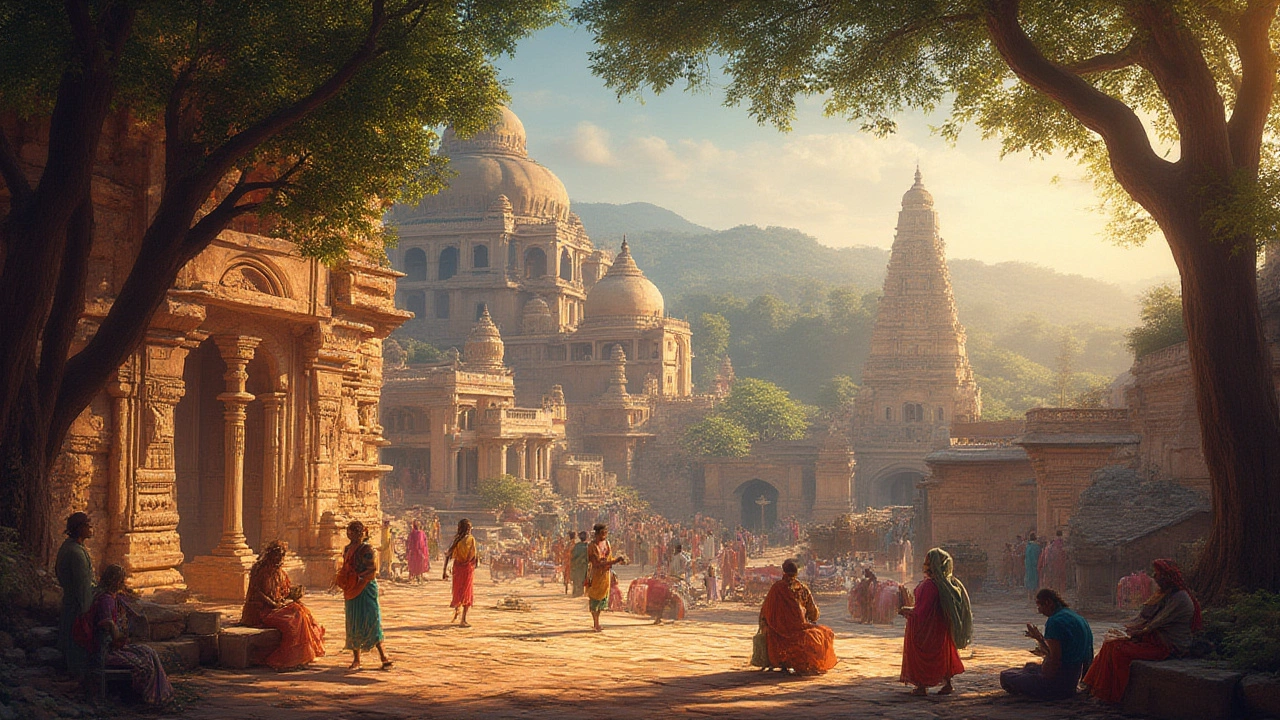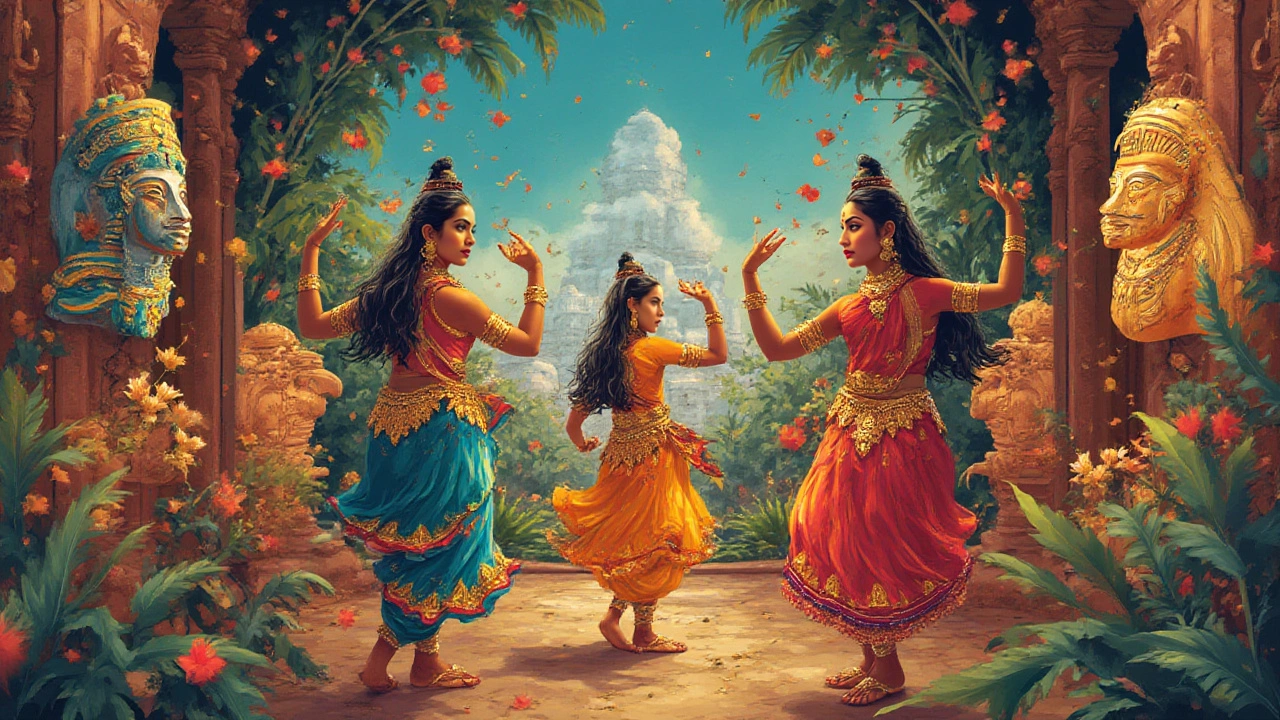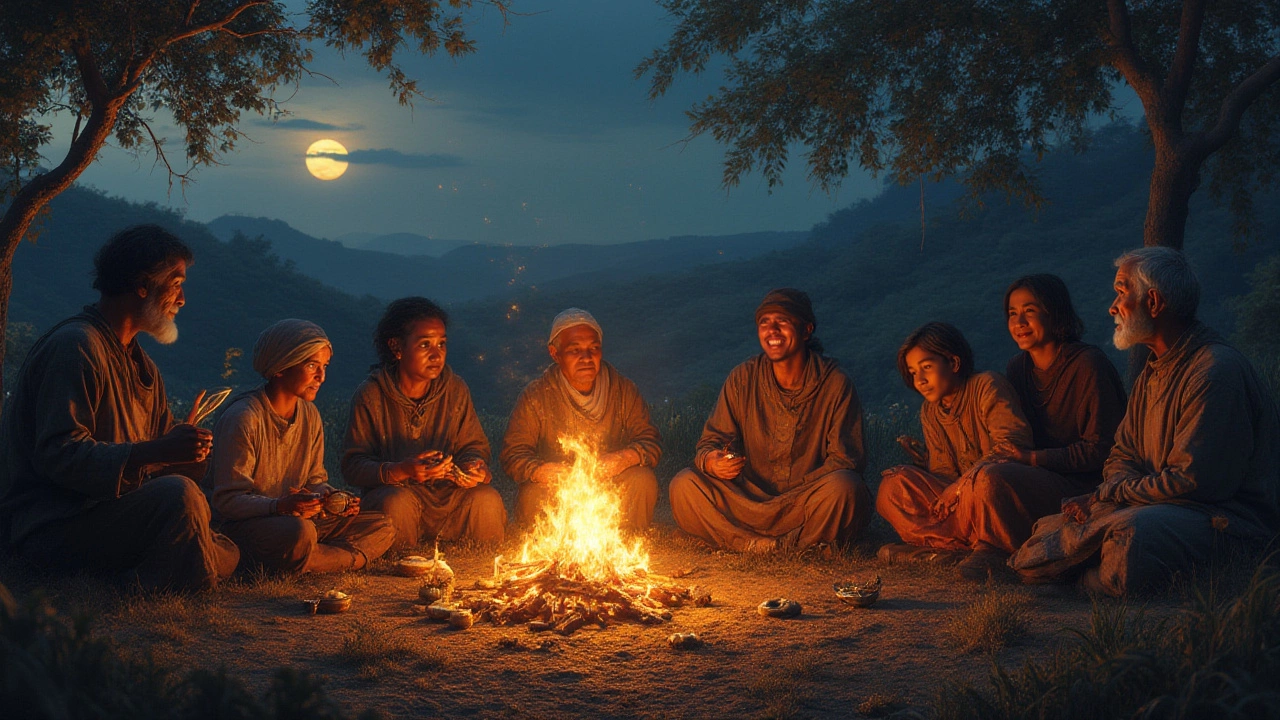Exploring the Richest Cultural Heritage: Which Country Truly Stands Out?

Which country has the richest heritage? That's a loaded question—and not just because history buffs love a good argument. Ever noticed how every country claims to have the widest, deepest, and most jaw-dropping heritage? Yet dig into the details, and you find out heritage isn't just about the biggest castles or the oldest scrolls. It's the quirky traditions that survived conquerors, the sacred places that still give people chills, and all those recipes passed down through generations. We're about to break down what makes a country’s heritage not just old, but truly rich, with a deep dive into how culture, relics, and real stories blend into something you can’t just count by monuments.
Defining What 'Richest Heritage' Means
Let’s get one thing straight—there’s no single scoreboard for heritage. Some folks think the country with the most UNESCO World Heritage sites wears the crown. Others swear it’s all about ancient ruins or living languages. But heritage is more complicated than a tally in a travel guide. It covers everything from age-old beliefs and regional dances to underground art scenes and recipes that stubbornly ignore modern shortcuts. Just because a country’s calendar bursts with festivals doesn’t make it #1—unless that’s how you measure richness.
Dive deeper, and you find layers: tangible heritage (castles, temples, paintings), intangible heritage (songs, stories, rituals), and natural heritage (sacred groves, wild landscapes passed down with myths). Sometimes, a single country manages to bundle all three like an overzealous parent bragging at a school fair. India, for example, is home to more than 40 UNESCO sites, more than 19,500 spoken languages or dialects, and festivals so colorful they make your Instagram explode. Then there's Italy—proud of its 59 UNESCO sites but also fiercely protective of its opera, pasta-making secrets, and city squares designed by Renaissance masters.
So, what counts as richness? One way to size things up is through diversity—how many traditions, religions, and languages are woven into daily life? Another is novelty—are people inventively keeping ancient customs alive or just preserving them in museums? Then there’s resilience: some countries almost lost their heritage thanks to wars or colonialism, yet managed to revive centuries-old dances, scripts, or architectural styles. If you're asking for a clear answer, prepare for some messy, glorious debates.
Countries that Stand Out for their Heritage
Italy is the reigning champion when it comes to sheer numbers. Those 59 UNESCO sites include Rome’s Colosseum, the ruins at Pompeii, cities like Florence where Renaissance art changed the world, and the canals of Venice, which pulse with centuries of trade and rebellion stories. Add in food traditions, the roots of opera, and whole towns that turn into stage plays for religious festivals, and you start to get why Italian heritage is a tough act to follow.
But then there’s India—a country described best as a swirl of traditions rather than a single thread. Whether it’s the intricate temple architecture in the south, the Mughal palaces of Rajasthan, or those elephant-led festivals in Kerala, India’s diversity is wild. The Kumbh Mela, for instance, is the world’s largest religious gathering, drawing tens of millions for a holy dip every dozen years. Consider its classical music, regional cuisines, silk-weaving towns, and yoga—heritage spills everywhere, not just behind museum ropes.
China’s legacy is impossible to overlook. Thirty-eight UNESCO sites, the awe-inspiring Great Wall (still the only thing that makes satellites squint), ancient tea ceremonies, porcelain techniques, and a philosophy embedded in its calligraphy. You’ve got dynasties that shaped not just their own country but philosophies across Korea, Japan, and Vietnam.
Then you have Egypt, whose pyramids have obsessed explorers for centuries. The Sphinx, the Valley of the Kings (with its tombs and curses), hieroglyphs, and irrigation techniques—all this makes Egypt’s heritage not just ancient, but jaw-dropping even for skeptical travelers. Modern Egypt still hums with Nubian music, bustling souks, and religious rituals that reach back millennia.
If your idea of heritage is less about ruins and more about living cultures that stayed close to their roots, then Japan deserves a shoutout. Shinto shrines sit next to neon-lit city blocks. The country has preserved tea ceremonies, martial arts, woodblock printing, and a philosophy of hospitality that shapes daily life. No wonder tourists rush for festivals like Gion Matsuri in Kyoto or cherry blossom season—these traditions aren’t just for show; they’re stitched into the culture.
If you care about numbers, here’s a quick snapshot:
| Country | UNESCO World Heritage Sites | Languages/Dialects | Living Traditions |
|---|---|---|---|
| Italy | 59 | ~34 | Opera, Carnival, Cuisine, Renaissance Art |
| India | 42 | 19,500+ | Yoga, Classical Music, Festivals, Textiles |
| China | 38 | ~299 | Tea Ceremonies, Calligraphy, Lion Dances |
| Egypt | 7 | ~70 | Pyramids, Folk Music, Souks |
| Japan | 25 | ~15 | Shinto Rituals, Festivals, Kabuki Theater |

Hidden Gems: Heritage Beyond the Obvious
It’s easy to focus on the big hitters, but zoom in and you’ll find countries with smaller populations quietly nurturing heritage just as rich—if not more quirky. Take Greece: sure, everyone knows the Acropolis, but step into the countryside and you're hit by tiny villages where grandmas still perform age-old Easter rituals. Festivals like Thessaloniki’s Dionysian parades bring ancient myths to life—not for tourists, but because they still matter to locals.
Peru sits way above sea level in terms of fascinating heritage. Yes, Machu Picchu steals the spotlight, but Quechua music, traditional textile weaving, potato varieties (more than 4,000, if you’re counting), and its sacred Inca sun festivals highlight a living culture that survived colonization. That's richness by survival.
Turkey straddles two continents and countless empires—Hittites, Byzantines, Ottomans. Walk through Istanbul and you’ll spot the Hagia Sophia, bazaars, mosques, and then end up at a tavern eating stuffed grape leaves while listening to music that sounds like it’s been echoing for centuries. Turkish culture is alive in daily rituals, bathhouses, and shadow puppets still performed in neighborhood squares.
Countries like Ethiopia and Morocco carry deep legacies that don’t show up on global rankings. Ethiopia’s rock-hewn churches of Lalibela, ancient coffee ceremonies, and spiritual music make you rethink what you know about African heritage. Morocco’s labyrinthine cities, argan oil crafts, Amazigh (Berber) languages, and the chaos of a Marrakech souk? That's heritage you can taste, hear, and sometimes get lost in—literally.
So, don’t stop at the top of the UNESCO charts. If you want to experience heritage with your senses—not just your eyes—look for living traditions, craft markets, and neighborhoods where elders still guide younger generations. Grab a guide who can tell you why that bread gets baked with specific spices, or how a village’s dance tells storm warnings better than any weather app.
How Heritage Survives and Evolves
You might think it’s all about the past, but the real magic is how heritage adapts. Think of Mexico’s Day of the Dead: what started as an Aztec ritual got mixed with Spanish Catholicism and now survives as street processions, sugar skull art, and Netflix cameos. The fact that global pop culture now riffs on these traditions points to a kind of richness that updates itself while keeping its roots.
Look at France. Yes, it’s about cathedrals and chateaux, but French people still relish regional dialects, cheese-making techniques lost on supermarket brands, and local fairs that date back to medieval times. In some towns, ancient bread ovens still fire up for festivals—one weekend a year, neighbors crowd in for bread that tastes nothing like Parisian baguettes.
Vietnam has managed to keep its water puppetry as a unique folk art—puppeteers perform knee-deep in rivers, telling old legends with music, firecrackers, and dragon costumes. Yet these shows have adapted—tourist theaters showcase versions in big cities, helping preserve a tradition that was once under threat of extinction.
But adaptation isn’t always smooth. Wars, colonization, and modernization can threaten heritage. Cambodia’s Angkor Wat, once abandoned, is now one of Southeast Asia’s biggest draws. Efforts to preserve the temples now sink millions into local crafts, music, and storytelling—helping Cambodians reconnect with roots that almost got erased.
Heritage isn’t just blanketed in museums and temples, either. It’s found in how people respond to global changes. Japanese cuisine blends ancient rice farming with modern sushi trains. Indigenous cultures in Australia reinterpret dot-painting for contemporary art markets. Morocco’s centuries-old hammams now thrive as hip spa experiences for Instagrammers and grandmothers alike.

Experiencing and Respecting Heritage as a Traveler
Okay, so you want to experience the richest heritage firsthand? It’s tempting to stand in a palace, snap photos, and move on, but real heritage sinks in when you talk to the people who keep it alive. Join a Sicilian grandmother for a cooking class. Hike with a local in the Inca Trail and ask about their childhood stories, not just the mountain names.
If you visit temples in India, cover your head and learn the rules—locals respect when you don’t treat sacred spaces as just Insta backgrounds. In Kyoto, a little curiosity about what’s written on ema prayer boards at shrines goes a long way—locals love sharing the meaning if you’re polite and ask.
Good news: heritage travel isn’t just about top sights. Look for living festivals, small-town museums, pottery villages, and cooking workshops. In Turkey, peek into a çay house and ask about the poetry readings. In Spain, shake off the tourist trail and find a local fair—flamenco feels very different when you see it in a dusty courtyard, not on TV.
One tip—ask questions, but also listen and observe. In places like Peru, artisans may be tired of tourists who want the cheapest souvenir; take a moment to learn how things are made and you’ll connect much deeper. Learning even a few local words wins big smiles. And when you can, support communities that work to keep traditions going, instead of just big agencies that treat heritage like a business.
If you want stats to plan your heritage journey, here’s a quick table with some popular heritage destinations and what you can expect:
| Destination | Main Heritage Types | Best Time To Visit | Travel Tip |
|---|---|---|---|
| Italy (Rome, Florence, Venice) | Ancient ruins, Renaissance art, food | April-June, Sept-Oct | Book museums ahead; explore early mornings |
| India (Jaipur, Varanasi, Kerala) | Temples, festivals, classical music | Nov-Feb | Join local cooking or textile workshops |
| China (Beijing, Xi’an, Hangzhou) | Great Wall, palaces, tea ceremonies | March-May, Sept-Oct | Travel by high-speed train; try regional cuisines |
| Greece (Athens, Santorini) | Ancient temples, village festivals | April-June, Sept | Attend Easter for vibrant rituals |
| Morocco (Marrakech, Fes) | Bazaars, music, artisan crafts | March-May, Sept-Nov | Visit hammams; shop at cooperative workshops |
Heritage isn’t a trophy a country hangs on the wall. It’s a living, evolving thing you can taste, touch, and feel—if you know where to look and how to ask. Next time you hear someone brag about their country's monuments, ask about grandma’s kitchen, the old songs sung on rainy days, or neighborhood festivals you won’t find on TripAdvisor. That’s where a country’s richest heritage really lives.